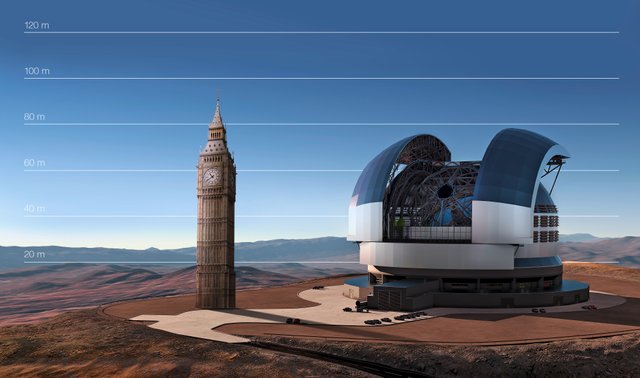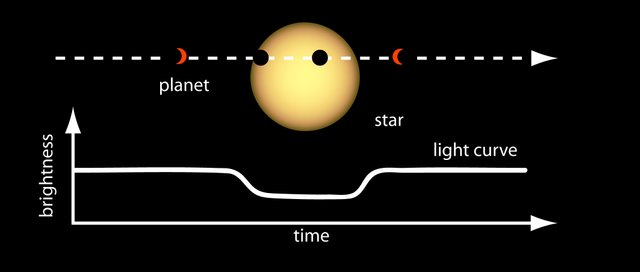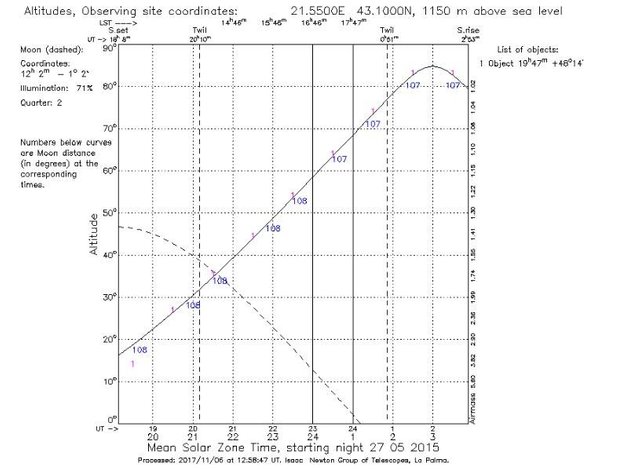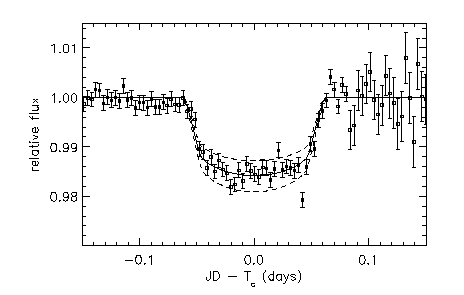Detecting an Exoplanet: Step-by-step Tutorial
Detecting an exoplanet is no easy job. Reasons are obvious- exoplanets are orbiting stars other than the Sun, and the nearest star is extremely far away. Planets are usually small bodies, compared to stars, and cosmic distances. They do not emit any kind of electromagnetic radiation, they might only reflect certain part of radiation they receive from their home star, but that also depends on planet's albedo, and reflected amount negligible. So, all this reasons contribute to the difficulty of detecting an exoplanet.
Luckily, astronomical instrumentation is improving every day, so we are able to overcome all difficulties.
Currently, main focus of astronomy research is in exoplanet detection, and finding possible habitable worlds. Enormously big, powerful and expensive telescopes are being built, and their main goal will be direct detection of exoplanets. One of these is E-ELT, short for European Extremely Large Telescope.
In the image above, you can see comparison of size of E-ELT and Big Ben.
But let's get back to reality. Until, E-ELT is finished and fully-operative, direct detection of exoplanets is hard to accomplish, and we have to find different solutions for this problem.
METHODS OF EXOPLANET DETECTION
Two main methods for detection are radial velocity method and transit method. Most of the discovered exoplanets are detected using one of these two methods.
1. Radial velocity method
This method is based on the fact that actually planets do not orbit around stars. Stars also feel gravitational effects of their planets, so both, planet and star, are orbiting common center of mass. But, mass of the star is usually many times bigger than planet's mass, so common center of mass is near the center of the star (that's why your physics teachers neglected this fact!). This disruption leads to variation of the speed with which the star is moving away or toward from planet. For example the speed of the Sun around the center of the mass of the system Earth-Sun is only 9 cm/s. Imagine how hard task it would be for an alien astronomer to detect the Earth using this method. The radial velocity can be found from the displacement of spectral lines of home star, because of the Doppler shift. The main flaw of this method is that we do not possess extremely sensitive spectrometers, and by this method we can detect only high mass planets, which are disrupting the parent star's movement significantly.
2.Transit method
More than 90% of exoplanets are detected using this method. Unlike, radial velocity method which might be hard to understand for someone outside of science, transit method is extremely simple, logical and easy to comprehend.
The image above is enough to understand everything about transit method. But let's go step-by-step.
We are measuring brightness of the star, and if there is nothing weird going on with the star we should measure constant brightness. During the planet's transit over the parent-star's surface we should notice sudden decrease of the brightness. Decrease is proportional to dimensions of the planet. Luckily, we do have photometers sensitive enough we can detect wide range of planets, from the biggest up to really small planets. After the planet had finished we should measure the same intensity of brightness as before. When such sudden decrease of brightness is noticed, we have potential exoplanet detected. To make sure that the decrease is due to the orbiting planet, we should repeat measure couple of times, and if we have periodical change of brightness, then we are sure that something is orbiting the star.
But the search for exoplanets is usually the same as searching for something in a completely dark room. You need to be both, lucky and determined to detect an exoplanet.
Let's get to the working part now. Even amateur astronomers can detect exoplanets if they have needed equipment and powerful enough tools. For demonstration, I have decided to play safe game, and to detect an exoplanet that is already detected with known parameters. In other words, to turn on the lights in previously dark room.
1.Choosing appropriate star
So, after you are theoretically prepared for observation you have to choose one star which you are going to observe. You have to carefully choose the date of observation, because moonlight can make you lots of problems. You also have to take care that the chosen star is high enough on the sky during all night, and that the Moon is far from the star, so you have best possible observations. Useful tool for choosing appropriate date and object is
http://catserver.ing.iac.es/staralt/
Using the mode 'staralt', setting desired date, location of the observation, coordinates of star, you will get the plot of the star's and Moon's altitude with respect to time.
I have chosen star named Kepler-6, and my planet target is Kepler-6b. My plot of Kepler-6 altitude looks like this.
Dashed line is Moon's altitude, and full line corresponds to the star's altitude. You can see that the Moon is far away, that the star is high enough during all night, so we are good for now.
This is actually the most important step, because if you do not follow proper criteria in choosing appropriate object you will get flawed data and incorrect results. I performed my observations during the strong moonlight which had certain influence, lowering the quality of my observation.
After you have chosen star and set up coordinates you have to wait, the rest of the process is pretty much auto-pilot mode.
2.Data reduction
After the sunrise, observation is finished, you need perform data reduction. Explanation of this step is lengthy and complicated, let's just say that there are Python scripts, which are pretty much authomatized and can do fairly good job without your supervision. You really do not have to be programming expert for this.
Of course you have to double check your data, calibrate your results, just to be sure everything is okay.
3.Interpreting the results
These were mine results. I have already mentioned moonlight problem, and another problem was that the sunrise interrupted the finishing of the transit, so we are missing flat line at the end of the observation. The results would be much better if we managed to plot the brightness after the transit. Of course, my instruments were far from perfect, but this result is completely reliable end enough to say that there is an exoplanet orbiting the star.
Of course you need to do error analysis, but it's not important for amateur purposes.
Ideal plot of observation performed under ideal circumstances using ideal equipment would be much more obvious proof of existence of exoplanet and would look like this
This is actually original plot of the discovery of the HD 209458b (credits to David Charboneau and Penn State University).
References:
https://www.nasa.gov/mission_pages/kepler/multimedia/images/transit-light-curve.html





Excellent explanation @laniakea1.
Радиш ли у некој опсерваторији?
hvala...paaa moze se reci volonterski :)
Good information..upvoted plz visit my page also
Congratulations @laniakea1! You have completed some achievement on Steemit and have been rewarded with new badge(s) :
Click on any badge to view your own Board of Honor on SteemitBoard.
For more information about SteemitBoard, click here
If you no longer want to receive notifications, reply to this comment with the word
STOPYo, seems like this is lacking in references! Is this basically all your work and knowledge?
-- steemstem person
Sorry, post is edited now.
But, yes, most of the article is my work, and the results are product of my work also.
Congratulations @laniakea1, this post is the second most rewarded post (based on pending payouts) in the last 12 hours written by a User account holder (accounts that hold between 0.1 and 1.0 Mega Vests). The total number of posts by User account holders during this period was 2574 and the total pending payments to posts in this category was $2838.54. To see the full list of highest paid posts across all accounts categories, click here.
If you do not wish to receive these messages in future, please reply stop to this comment.
good information
Good information
Congratulations @laniakea1! You have completed some achievement on Steemit and have been rewarded with new badge(s) :
Click on any badge to view your own Board of Honor on SteemitBoard.
For more information about SteemitBoard, click here
If you no longer want to receive notifications, reply to this comment with the word
STOPCongratulations @laniakea1! You have completed some achievement on Steemit and have been rewarded with new badge(s) :
Click on any badge to view your own Board of Honor on SteemitBoard.
For more information about SteemitBoard, click here
If you no longer want to receive notifications, reply to this comment with the word
STOPCongratulations @laniakea1! You have completed some achievement on Steemit and have been rewarded with new badge(s) :
Click on any badge to view your own Board of Honor on SteemitBoard.
For more information about SteemitBoard, click here
If you no longer want to receive notifications, reply to this comment with the word
STOP